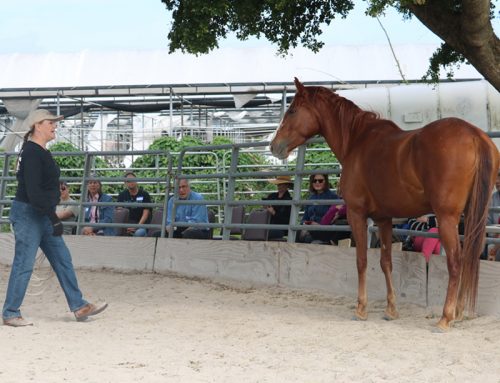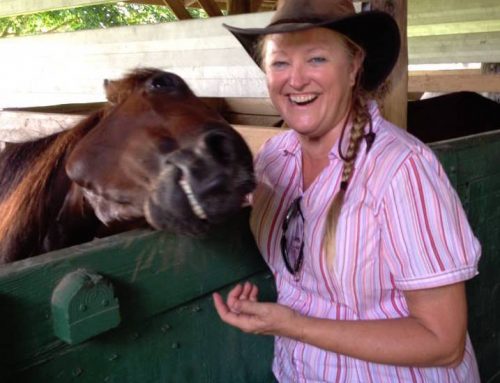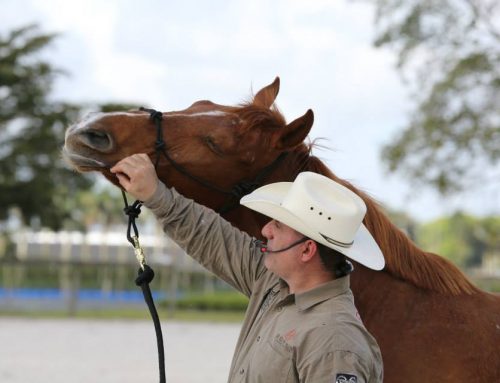Horses show no innate skill to read humans – study

Domestic horse breeds may be the product of generations of carefully managed matings, but that does not appear to have given them any innate skills to read human cues, a study suggests.
Researchers from the University of Sussex in England explored the possibility that horses may have developed, through the process of domestication, an innate predisposition to be skilled at reading human communicative and attentional cues.
Their findings, published in the open-access journal, PLoS ONE, found no such evidence.
The researchers, Leanne Proops, Jenny Rayner, Anna Taylor and Karen McComb ackowledged that adult domestic horses were highly sensitive to subtle bodily cues when determining if a person was attentive toward them, but less adept at using human cues, such as pointing or tapping, in object choice tasks.

The four, from the university’s Mammal Vocal Communication and Cognition Research division in the Department of Psychology, set about studying the development of such skills in horses to gain insights into the mechanisms underlying these abilities.
A total of 35 young horses under the age of three were used in the research, across three experiments.
The methods used in the study involved interactions that were similar to those the horses were likely to experience in their normal daily routine. Trials were carried out in a familiar setting for each horse.
In the first experiment, each horse underwent a series of tests in which they were presented with two people, one who was paying attention to them and one who was inattentive. Horses were released to determine whom they chose to approach to receive food.
The remaining experimental work involved assessing whether horses successfully read a variety of cues from a person indicating which one of two or three containers contained a food reward. The cues included gazing, tapping, the use of markers, and a wide variety of pointing cues, some close to the target and some further away. Some mixed cues were also used.
The researchers found that, compared with adult horses, youngsters under the age of three could use body orientation but not more subtle cues such as head movement and open/closed eyes to correctly choose an attentive person to approach for food.
In the bucket-choice experiments, the performance of young horses was comparable to that of adult horses. The subjects were able to correctly choose a bucket with a food reward using marker placement, pointing and touching cues, but could not use body orientation, gaze, elbow pointing or tapping cues.
“Taken together, these results do not support the theory that horses possess an innate predisposition to be particularly skilled at using human cues,” the researchers concluded.
“Horses’ ability to determine whether humans are attending to them using subtle body cues appears to require significant experience to fully develop, and their perhaps less remarkable use of limited cues in object-choice tasks, although present at a much earlier age, is likely to reflect a more general learning ability related to stimulus enhancement rather than a specific ‘human-reading’ skill.”
As a group, young horses, like adult horses, chose the attentive person significantly more often than the inattentive person using the body cue, but unlike adult horses, they did not use the head cue or the eye cue.
“Neither did the young horses use the mixed cue. The young horses performed at a comparable level to that of adult horses given the body cue. Although the adult horses were able to use the head cue and the young horses were not, their performances were not found to be significantly different.”
The young horses were significantly worse than adult horses at using the eye cue, the study found.
There was no significant difference between the performance of males and females, the researchers noted.
The study also found a significant bias in favour of the person on the right side.
“Horses have shown lateral biases in information processing across a variety of tasks, preferring to use their right eye when viewing novel objects, their left when viewing a person and their right when identifying familiar people cross-modally.”
It is not clear what aspect of the tasks in the study led to a preference for the right side, the researchers said.
“Our results suggest that the skills required by horses to perform the two human-reading tasks in our studies require different cognitive mechanisms with different patterns of development.
“Adult horses are highly skilled at reading subtle human body cues to determine the direction of a person’s attention and this is a skill that appears to require significant experience to develop.
“In contrast to the skilled use of human attentional cues by adult horses, adult and young horses are not particularly skilled at attending to human communicative cues to choose a rewarded container in the object-choice task.
“Horses are only able to use cues that provide stimulus enhancement and this skill is present at a relatively early age. Thus, their performance in this task is likely to reflect the use of a very general and simple learning mechanism that does not require any extensive exposure to human behaviour beyond the acceptance of them as social partners.”
The results, they said, strongly suggested that horses’ ability to read human attentional cues did not reflect an inherent sensitivity to human cues, rather a skill developed through extensive experience over a horses’ lifetime.
“The more limited ability of horses to use human-given cues, although present at an early age, appears to reflect a general learning mechanism that is evident in a number of wild as well as domestic species in which the individuals tested have accepted humans as social partners.
“The results of this study do not, therefore, support the notion that domestic horses possess an innate predisposition to be particularly skilled at reading human attentional and communicative cues.”
Proops L, Rayner J, Taylor AM, McComb K (2013) The Responses of Young Domestic Horses to Human-Given Cues. PLoS ONE 8(6): e67000. doi:10.1371/journal.pone.0067000
The full article can be accessed online at http://www.plosone.org/article/info%3Adoi%2F10.1371%2Fjournal.pone.0067000


